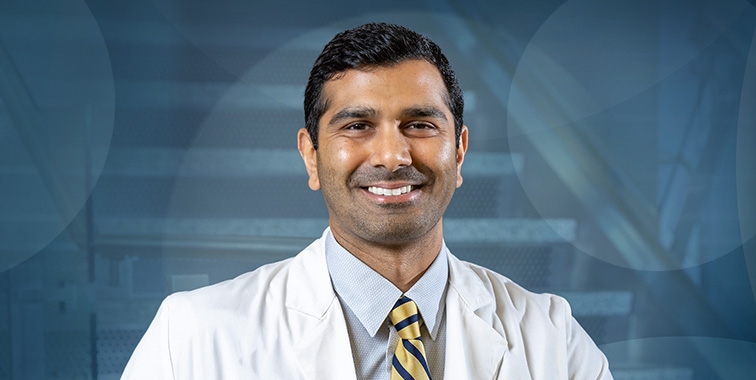School Coaches and Athletic Directors Target Safety & Injury Prevention at Complimentary North Oaks Sports Medicine Training
- Category: In The News
- Posted On:
[HAMMOND, La.]—More than 50 high school coaches and athletic directors from Tangipahoa and Livingston parishes tackled the prevention and treatment of sports-related injuries during a series of educational sessions presented by North Oaks Clinic network physicians and Sports Medicine staff on Saturday, Aug. 13.
The goal of the complimentary event, held at the E. Brent Dufreche Conference Center located within North Oaks Diagnostic Center in Hammond, was to prevent sports injuries among young athletes, according to Orthopedic Surgeon Judson L. Penton, MD. Safety and prevention topics covered included: heat illness, concussions and head injuries in athletics, heart screenings, sickle cell trait’s impact on athletes, cervical spine injuries, overuse injuries and physical therapy, and athletic trainers role in the clinical setting. An update on Louisiana High School Athletic Association Rules and Regulations also was provided.
The North Oaks Sports Medicine program is a collaborative effort of North Oaks, Southeastern Louisiana University, local physicians, Northshore Imaging Associates and area anesthesiologists. North Oaks started the Sports Medicine program nearly 20 years ago to focus on meeting the health care and educational needs of area athletes on the playing field and beyond.
During his presentation on heat illness, Dr. Penton noted that, each year, nearly 4,000 deaths nationwide are caused by heat, making it the third most common cause of death in athletes.
Ponchatoula High School football coach Hank Tierney observed that heat-related injuries seem to be becoming increasingly more common and more serious. By attending the sessions, he intended to better prepare himself to identify the severity of injuries and their potential outcomes.
Stephen Labbe, athletic director and head baseball coach at Hammond High Magnet School, agreed.
“The more educated we are, the more we can prevent injuries among our kids,” he explained. “We need to know what to look for so that we don’t face these problems.”
Neurologist Patricio S. Espinosa, MD, told the group in his session on concussions and head injuries that 3 million Americans suffer from concussions each year. Any athlete who appears to have sustained a concussion should immediately be removed from play, and the player should be evaluated by a physician who has training in treating sports concussions. The athlete should not return to sports until all symptoms of concussion have alleviated.
Athletes of all ages should be properly screened for various cardiac or vascular problems that may prove fatal in an otherwise healthy athlete during strenuous physical activity, warned Emergency Medicine Physician Dennis J. Morris, MD. His session on heart screening delineated specific signs and symptoms of heart problems, including unexplained fainting, dizziness, excessive fatigue or shortness of breath, chest pain and high blood pressure, to name a few.
“I think a lot of coaches would benefit from this information,” remarked Liz Bryant, assistant volleyball coach at Mater Dolorosa Catholic School in Independence. “Anyone could find himself or herself in this situation, so it’s great to learn about all the possibilities.”
Of the 21 deaths during collegiate football practices in the past decade, at least eight of the players had sickle cell trait, observed Emergency Medicine Physician Alyssa C. Lyon, MD, in her presentation on “Sickle Cell Trait and Impact on Athletes.” She explained that the condition can be aggravated by heat and extreme exertion.
During the session on “Cervical Spine Injuries in Sports,” Orthopedic Surgeon Brian J. Ladner, MD, discussed the importance of coaches becoming familiar with protocols for treatment of catastrophic spinal cord injuries in sports, including stabilization, removal of equipment and transportation of the injured athlete.
It’s important for football coaches and staff to familiarize themselves with equipment and the proper removal of helmets, shoulder pads and facemasks to prevent further injuries, Dr. Ladner added.
Robbie Miller, football coach at Holy Ghost Catholic School in Hammond, found the information helpful and attended the seminars to “be a better coach” for his student athletes.
“By improving my knowledge, my kids benefit,” he shared. “I want to keep them safer. I’m now more aware and better prepared.”
Orthopedic Surgeon Bryan S. Dudoussat, MD, warned during his “Overuse Injuries” session that some athletes, like baseball pitchers, repetitively use the same muscles. This “overuse” can be harmful and often results in the need for surgery.
Doyle High School Athletic Director Bradley Watts would like to attend additional seminars in the future.“I want to be a resource for our parents and coaches. I’ve always been impressed with the North Oaks Sports Medicine program,” he added. “This was fantastic and made me realize how much information we need to know.”
Those who attended the complimentary seminars received four Certified Education Units (CEUs) for their participation.
North Oaks Sports Medicine physical therapists, certified athletic trainers and technicians are responsible for the care of many junior high and high school student-athletes during many local athletic events and varsity athletic practices. Those enrolled in the program may benefit from: sports enhancement and preventative medicine educational seminars; comprehensive rehabilitation by appointment; emergency acute care; the Sports Medicine discount for treatment of injuries; participation in an annual “Physical Day,” which provides free physical screenings to eligible junior high and high school athletes; and a safe and healthy environment for sports participation.
For more information about the North Oaks Sports Medicine program, please call (985) 230-5248.
The goal of the complimentary event, held at the E. Brent Dufreche Conference Center located within North Oaks Diagnostic Center in Hammond, was to prevent sports injuries among young athletes, according to Orthopedic Surgeon Judson L. Penton, MD. Safety and prevention topics covered included: heat illness, concussions and head injuries in athletics, heart screenings, sickle cell trait’s impact on athletes, cervical spine injuries, overuse injuries and physical therapy, and athletic trainers role in the clinical setting. An update on Louisiana High School Athletic Association Rules and Regulations also was provided.
The North Oaks Sports Medicine program is a collaborative effort of North Oaks, Southeastern Louisiana University, local physicians, Northshore Imaging Associates and area anesthesiologists. North Oaks started the Sports Medicine program nearly 20 years ago to focus on meeting the health care and educational needs of area athletes on the playing field and beyond.
During his presentation on heat illness, Dr. Penton noted that, each year, nearly 4,000 deaths nationwide are caused by heat, making it the third most common cause of death in athletes.
Ponchatoula High School football coach Hank Tierney observed that heat-related injuries seem to be becoming increasingly more common and more serious. By attending the sessions, he intended to better prepare himself to identify the severity of injuries and their potential outcomes.
Stephen Labbe, athletic director and head baseball coach at Hammond High Magnet School, agreed.
“The more educated we are, the more we can prevent injuries among our kids,” he explained. “We need to know what to look for so that we don’t face these problems.”
Neurologist Patricio S. Espinosa, MD, told the group in his session on concussions and head injuries that 3 million Americans suffer from concussions each year. Any athlete who appears to have sustained a concussion should immediately be removed from play, and the player should be evaluated by a physician who has training in treating sports concussions. The athlete should not return to sports until all symptoms of concussion have alleviated.
Athletes of all ages should be properly screened for various cardiac or vascular problems that may prove fatal in an otherwise healthy athlete during strenuous physical activity, warned Emergency Medicine Physician Dennis J. Morris, MD. His session on heart screening delineated specific signs and symptoms of heart problems, including unexplained fainting, dizziness, excessive fatigue or shortness of breath, chest pain and high blood pressure, to name a few.
“I think a lot of coaches would benefit from this information,” remarked Liz Bryant, assistant volleyball coach at Mater Dolorosa Catholic School in Independence. “Anyone could find himself or herself in this situation, so it’s great to learn about all the possibilities.”
Of the 21 deaths during collegiate football practices in the past decade, at least eight of the players had sickle cell trait, observed Emergency Medicine Physician Alyssa C. Lyon, MD, in her presentation on “Sickle Cell Trait and Impact on Athletes.” She explained that the condition can be aggravated by heat and extreme exertion.
During the session on “Cervical Spine Injuries in Sports,” Orthopedic Surgeon Brian J. Ladner, MD, discussed the importance of coaches becoming familiar with protocols for treatment of catastrophic spinal cord injuries in sports, including stabilization, removal of equipment and transportation of the injured athlete.
It’s important for football coaches and staff to familiarize themselves with equipment and the proper removal of helmets, shoulder pads and facemasks to prevent further injuries, Dr. Ladner added.
Robbie Miller, football coach at Holy Ghost Catholic School in Hammond, found the information helpful and attended the seminars to “be a better coach” for his student athletes.
“By improving my knowledge, my kids benefit,” he shared. “I want to keep them safer. I’m now more aware and better prepared.”
Orthopedic Surgeon Bryan S. Dudoussat, MD, warned during his “Overuse Injuries” session that some athletes, like baseball pitchers, repetitively use the same muscles. This “overuse” can be harmful and often results in the need for surgery.
Doyle High School Athletic Director Bradley Watts would like to attend additional seminars in the future.“I want to be a resource for our parents and coaches. I’ve always been impressed with the North Oaks Sports Medicine program,” he added. “This was fantastic and made me realize how much information we need to know.”
Those who attended the complimentary seminars received four Certified Education Units (CEUs) for their participation.
North Oaks Sports Medicine physical therapists, certified athletic trainers and technicians are responsible for the care of many junior high and high school student-athletes during many local athletic events and varsity athletic practices. Those enrolled in the program may benefit from: sports enhancement and preventative medicine educational seminars; comprehensive rehabilitation by appointment; emergency acute care; the Sports Medicine discount for treatment of injuries; participation in an annual “Physical Day,” which provides free physical screenings to eligible junior high and high school athletes; and a safe and healthy environment for sports participation.
For more information about the North Oaks Sports Medicine program, please call (985) 230-5248.




[1].jpg)